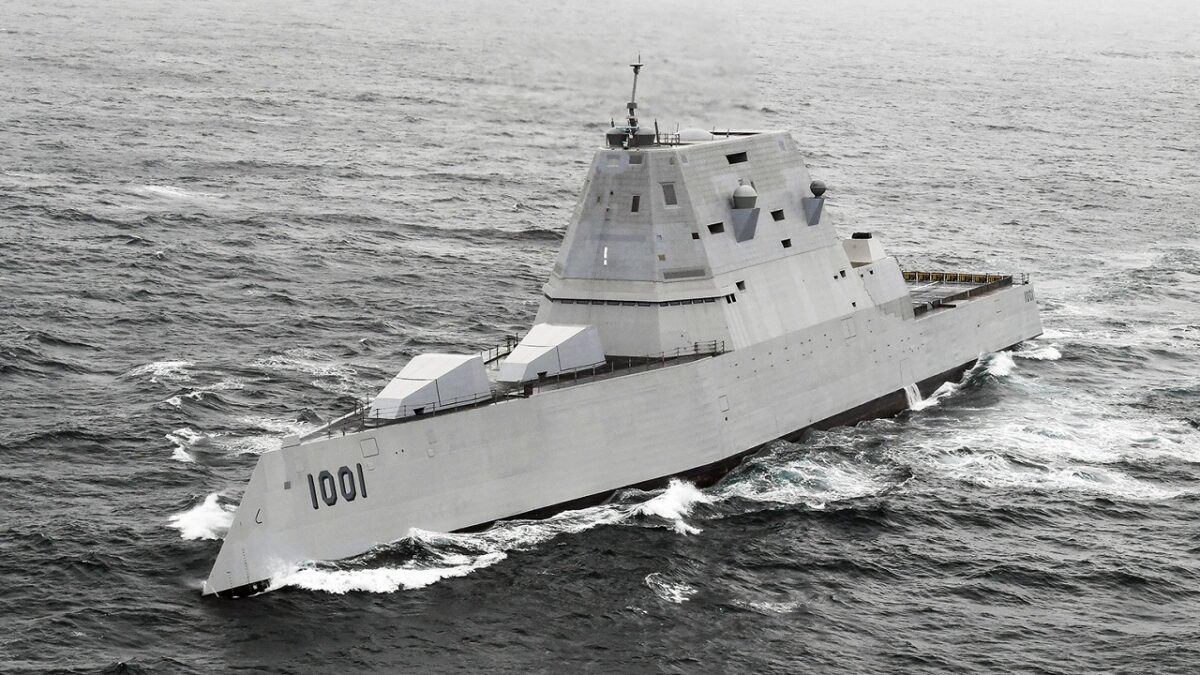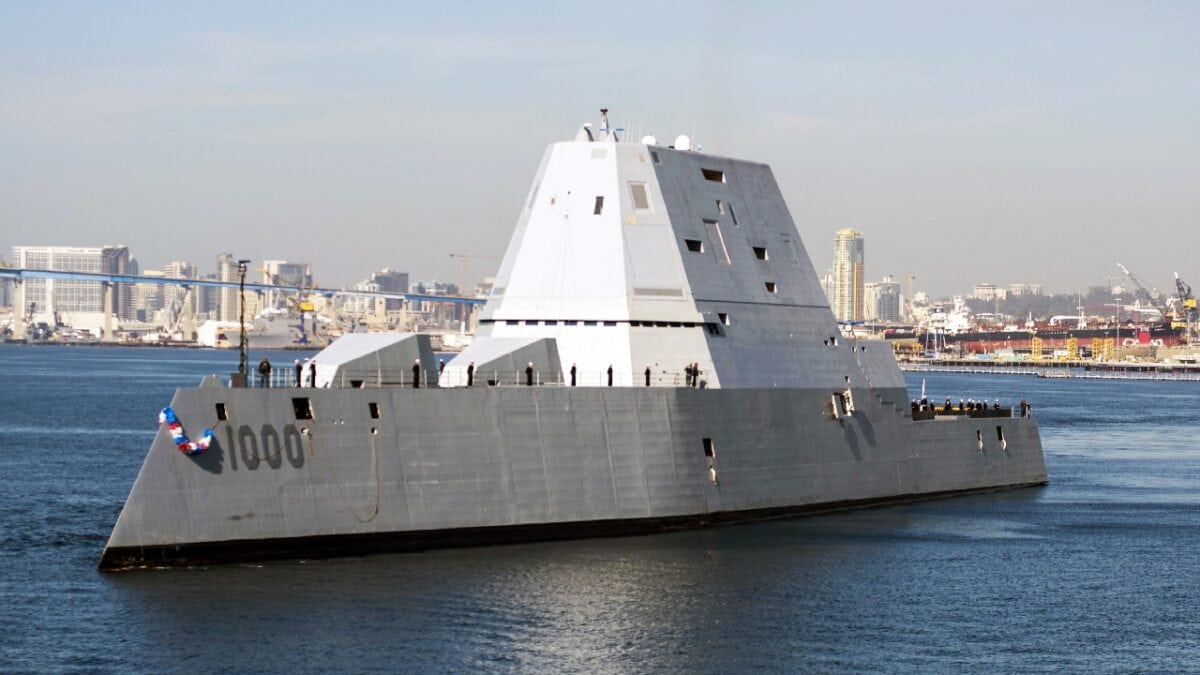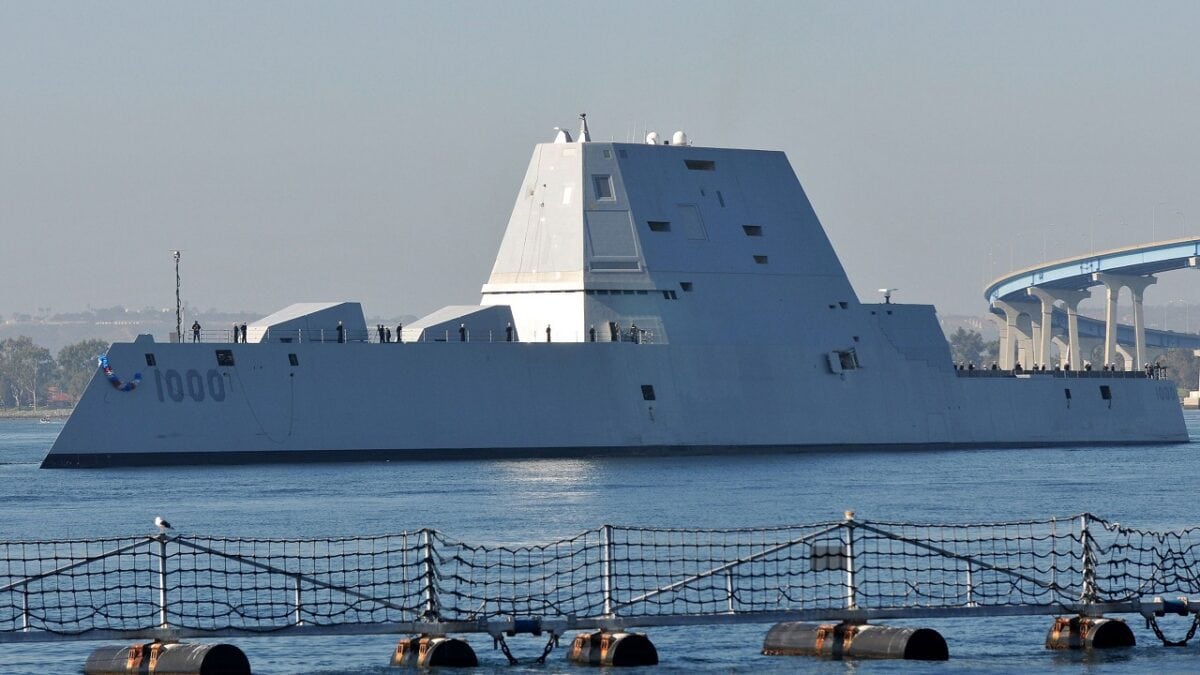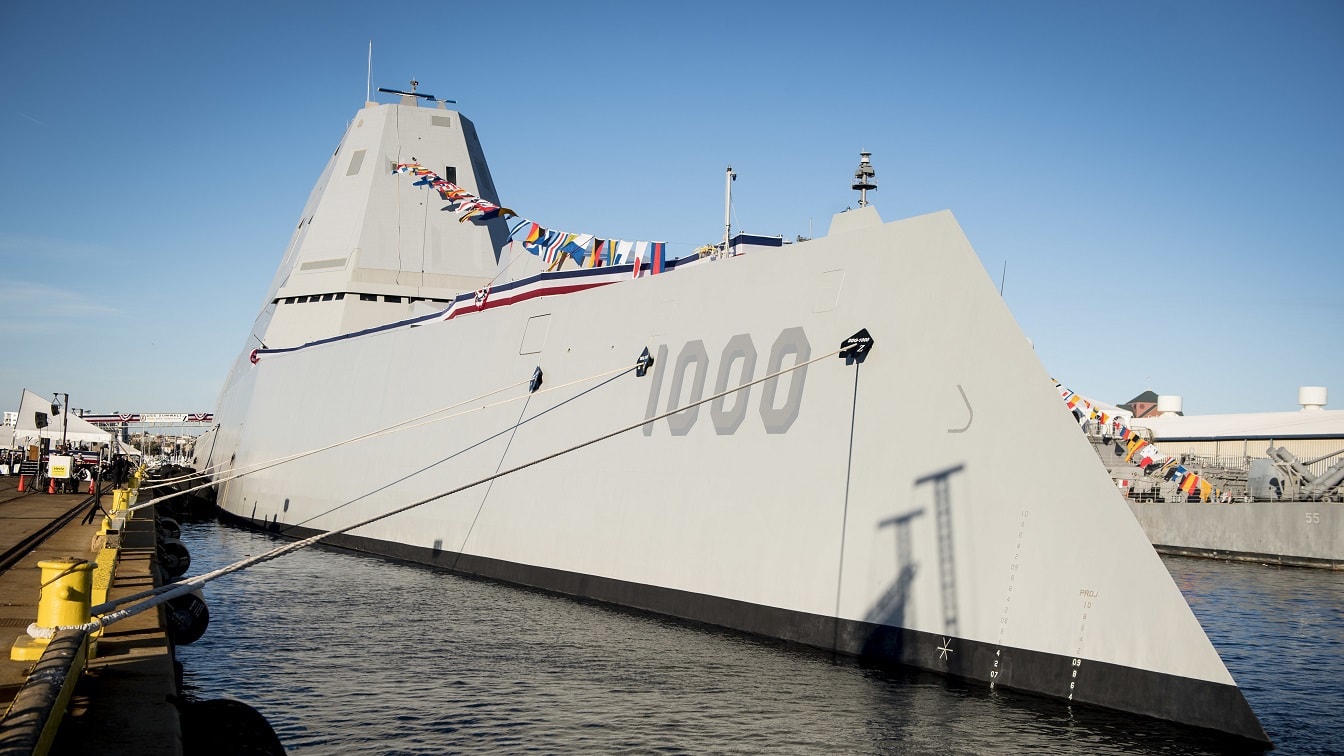Years of controversy and questions about their worth have followed the Zumwalt-class destroyers as China and Russia challenge the U.S. Navy’s supremecy. Are they stealthy weapons of war worth it? They could be, especially if they are soon armed with new hypersonic missiles:
The US Navy’s most advanced destroyer may finally be turning over a new operational leaf after years of maintenance delays, budget headaches, and debates about its role in the fleet.
USS Zumwalt, the lead ship of the Zumwalt-class stealth destroyers, made a port call in Guam on September 19 and arrived in Japan on September 26. It departed Japan on October 8.
The trip is the farthest the warship has been from its home port in San Diego since it was commissioned in 2016. It’s also a chance to figure out what the Zumwalt class will actually do for the Navy.
Meet the Zumwalt
“While the ship and crew are being tasked as ships normally would be, their employment is part of the fleet integration process of introducing a class of ship into the operational environment and understanding how it can best operate with other ships/platforms,” a Navy official told CNN.
The Zumwalts — Zumwalt, USS Michael Monsoor, and USS Lyndon B. Johnson, each of which cost about $8 billion — were originally designed with the Advanced Gun System, which was to fire Long Range Land-Attack Projectiles, a rocket-assisted 155 mm round that is “the most accurate and longest-range guided projectile,” according to its manufacturer, Lockheed Martin.
With those rounds, the Zumwalts were to provide fire support to forces ashore and conduct other operations in near-shore waters, but as the Navy cut its planned order of Zumwalt-class ships from nearly 30 to just three, the cost of those rounds rose to almost $1 million apiece.
Unable to fulfill their intended role, the Zumwalts were reassigned, with the Navy deciding to arm them with up to 12 new hypersonic missiles.
As part of that plan, the ships’ guns are to be removed and replaced with the vertical launcher for the Common Hypersonic Glide Body. The modifications are set to begin in 2023, a US Navy official told USNI News.
In addition to technological challenges, the ships have faced years of maintenance hiccups, such as a malfunction in USS Zumwalt’s propulsion system that left it stuck in the Panama Canal in 2016 and needing to be towed out — its second breakdown during its first few months in service.
While the Zumwalts’ new technology hasn’t always worked out, sailors have complemented its design.
While underway off of Alaska in 2019, the crew used a storm to test the ship’s handling in heavy seas. Capt. Andrew Carlson said that despite 13- to 20-foot waves, the tumblehome hull design, which works to right the ship more quickly than previous designs, made it easier to handle.
“All told I’d rather be on that ship than any other ship I’ve been on,” Carlson told Defense News of the Zumwalt. “For those of us who have been on cruisers, especially up top, you kind of lean over 15 degrees and you wonder if you are going to come back. We didn’t experience any of that.”
Years in the making
While the Navy says USS Zumwalt’s time in the Pacific is not officially a deployment, the port call in Guam highlights the US’s persistent presence in the region.
“This port call is a testament to the crew’s hard work and the resiliency of the ship,” Capt. Amy McInnis, Zumwalt’s commanding officer, said after arrival in Guam.
While Zumwalt was in Japan, its sailors took on supplies, including food, repair parts, and mail. The ship’s command master chief, Andrew Zalewski, said that even though the stop in Japan “seems ordinary,” the visit “was actually a culmination of years of hard work and planning.”
Operating the destroyer with the US Navy’s 7th Fleet and alongside allies and partners “is an important step” for the Zumwalts and for the fleet, said Lt. Katherine Serrano, a public affairs officer with Task Force 71 and Destroyer Squadron 15, to which the Zumwalt is currently assigned.
“Zumwalt-class destroyers maximize stealth, size, power, and computing capacity — fielding an array of weapons systems and cutting-edge technologies to fight forces in the air, on and under the sea, and on land,” Serrano told Insider.

210421-N-FC670-1062 PACIFIC OCEAN (April 21, 2021) Zumwalt-class guided-missile destroyer USS Michael Monsoor (DDG 1001) participates in U.S. Pacific Fleet’s Unmanned Systems Integrated Battle Problem (UxS IBP) 21, April 21. UxS IBP 21 integrates manned and unmanned capabilities into challenging operational scenarios to generate warfighting advantages. (U.S. Navy photo by Chief Mass Communication Specialist Shannon Renfroe)

SAN DIEGO (Dec. 8, 2016) The guided-missile destroyer USS Zumwalt (DDG 1000) arrives at its new homeport in San Diego. Zumwalt, the Navy’s most technologically advanced surface ship, will now begin installation of combat systems, testing and evaluation and operation integration with the fleet. (U.S. Navy photo by Petty Officer 3rd Class Emiline L. M. Senn/Released)

161208-N-ZF498-130 .SAN DIEGO (Dec. 8, 2016) The U.S. Navy’s newest warship, USS Zumwalt (DDG 1000) passes Coronado bridge on its way to Naval Base San Diego. Zumwalt is the lead ship of a class of next-generation multi-mission destroyers, now homeported in San Diego. (U.S. Navy photo by Petty Officer 3rd Class Anthony N. Hilkowski/Released)

Zumwalt-Class. Image Credit: Creative Commons.
As tensions with China have risen over Taiwan and other issues, Beijing has repeatedly criticized US military activity in the region, including US Navy transits through waters claimed by Beijing.
In July, China’s Foreign Ministry called the US’s so-called freedom of navigation exercises an attempt to “undermine regional peace and stability.”
US officials often emphasize their network of alliances in the region and say their forces will “continue to fly, sail, and operate wherever international law allows.”
Rachel Nostrant is a US-based journalist with work published in New York magazine, VTDigger, Military Times, and Defense News. She has covered topics including environmental contamination outside of military bases, the murder of US Army soldier Vanessa Guillen, rising tensions between China and Taiwan, and the war in Ukraine. This first appeared in Insider.

